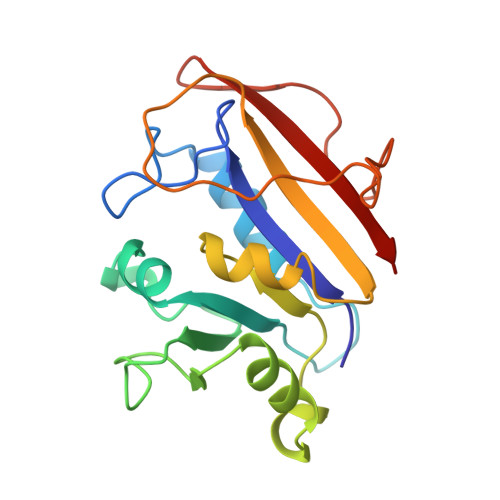Methotrexate-resistant variants of human dihydrofolate reductase with substitutions of leucine 22. Kinetics, crystallography, and potential as selectable markers.
Lewis, W.S., Cody, V., Galitsky, N., Luft, J.R., Pangborn, W., Chunduru, S.K., Spencer, H.T., Appleman, J.R., Blakley, R.L.(1995) J Biol Chem 270: 5057-5064
- PubMed: 7890613
- DOI: https://doi.org/10.1074/jbc.270.10.5057
- Primary Citation of Related Structures:
1DLR, 1DLS - PubMed Abstract:
Although substitution of tyrosine, phenylalanine, tryptophan, or arginine for leucine 22 in human dihydrofolate reductase greatly slows hydride transfer, there is little loss in overall activity (kcat) at pH 7.65 (except for the arginine 22 variant), but Km for dihydrofolate and NADPH are increased significantly. The greatest effect, decreased binding of methotrexate to the enzyme-NADPH complex by 740- to 28,000-fold due to a large increase in the rate of methotrexate dissociation, makes these variants suitable to act as selectable markers. Affinities for four other inhibitors are also greatly decreased. Binding of methotrexate to apoenzyme is decreased much less (decreases as much as 120-fold), binding of tetrahydrofolate is decreased as much as 23-fold, and binding of dihydrofolate is decreased little or increased. Crystal structures of ternary complexes of three of the variants show that the mutations cause little perturbation of the protein backbone, of side chains of other active site residues, or of bound inhibitor. The largest structural deviations occur in the ternary complex of the arginine variant at residues 21-27 and in the orientation of the methotrexate. Tyrosine 22 and arginine 22 relieve short contacts to methotrexate and NADPH by occupying low probability conformations, but this is unnecessary for phenylalanine 22 in the piritrexim complex.
Organizational Affiliation:
Department of Molecular Pharmacology, St. Jude Children's Research Hospital, Memphis, Tennessee 38101.
















